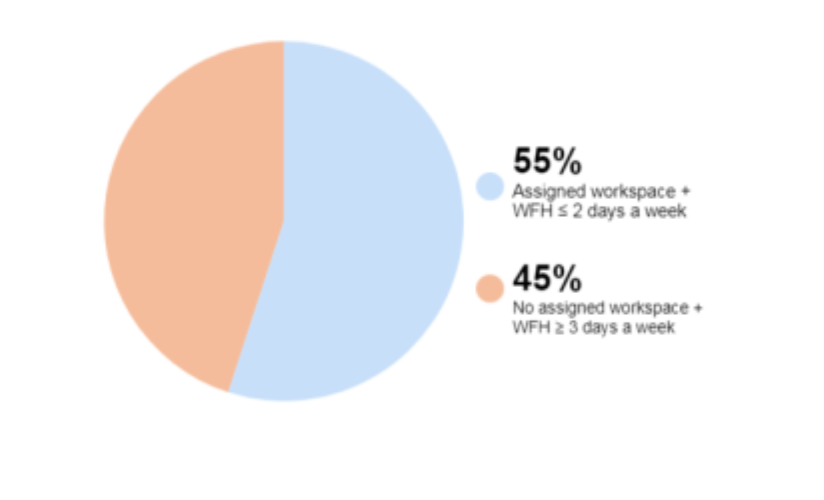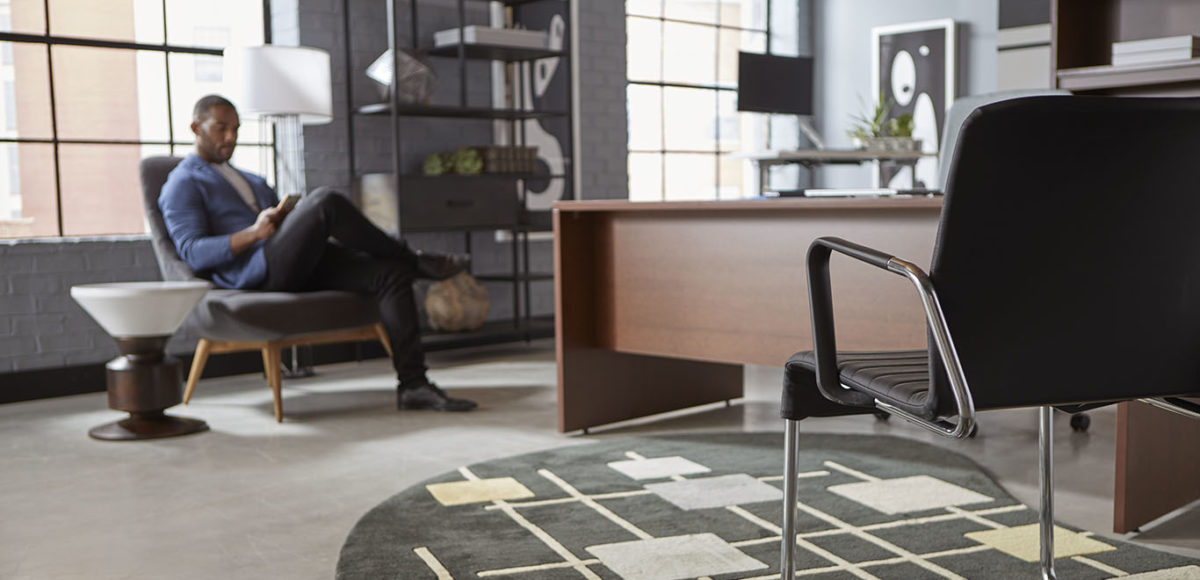The workplace has possibly never been in such a state of flux as now, and those in the role of “Facility Manager” need to be able to adapt. Today’s facility manager has to understand shifting management principles and the importance of emotional intelligence in the workplace, not to mention being technologically savvy and open-minded.
This article will explore three of the biggest challenges that facility managers face today, as well as solutions that can be used to solve them.
Challenge #1: A Changed Workplace
There has been a paradigm shift (of what could be called momentous proportions) in the workplace today – from a traditional, fixed workplace model to a workplace that is more hybrid and flexible. In that kind of workplace, employees have far more flexibility as to where and how they work. Studies show that American workers want to work more remotely and flexibly.
Although this radical change in how people work has its pros and cons – it is here to stay. Using the phrase “new normal” may feel a bit cliche by now but it is still the most accurate way to describe the state that we’re all facing within the workplace. For facility managers, this presents a host of challenges. The very concept of what constitutes an ‘office’ means that the facility manager has to contend with issues ranging from space utilization and maximization to lighting efficiency considerations and the type of furniture that populates workspaces.
Solution: Smart Space Utilization
One of the most effective ways for facility management to tackle the challenges of hybrid workplaces is to focus on one key factor: space utilization. A good start is to do a type of workplace ‘spring clean’ akin to what we all do in our own homes. Undertaking an occupancy study will provide firmer insights into how employees use spaces. Workplace occupancy sensor technology, like those found with 4SITE by CORT, are tools that can be very helpful in establishing these critical insights.
When conducting any type of space utilization study— be it room occupancy, office occupancy, desk occupancy, or something else — sensors are essential. Observational studies can be invasive, and time-consuming, and at times, these studies will include human error.
Similarly, badge studies may have incomplete or inaccurate data that doesn’t provide a full picture. Sensor studies backed by data are cost-effective, accurate, and do not interfere with day-to-day operations.
According to Allison Ballard, Vice President & Executive Director for 4SITE by CORT, “The workplace will become increasingly self-service, allowing employees to select when and where to work while providing visibility into when and where collaborators will be working. Allowing for flexibility to respond to this type of agility will be key to keeping the office relevant. Bear in mind the space has to perform, therefore experimentation is the only way forward. Don’t be afraid to experiment, measure, evaluate, and iterate.”
When you use sensors to determine your space utilizations and make changes accordingly you:
- Create an optimal environment for your employees
- Increase productivity
- Make data-driven decisions that inspire confidence and remove room for error
- Support your team by giving them what they need when they need it
- Change workplace dynamics by making room for options like hybrid work, remote work, hoteling, and hot-desking
- Attract and retain the best talent
- Reduce costs on storage, furniture purchases, and possibly even your lease
- Encourage employees to make smarter decisions about how they use the space
Challenge #2: A Changed Workforce
The ‘Great Resignation’ that grabbed headlines in the post-COVID era could be mere hype or it may be the real deal. Time will tell. However, there is no denying that the workforce has changed quite dramatically. This has more stress on maintenance teams having to grapple with constantly-shifting workplaces.
Legacy workforce management systems, as they are now known, upon which facility managers depended, were based on straightforward scheduling and reporting tasks. This also determined how workplaces were divided between departments and employees. However, that linear, traditional approach to workforce and workspace management is not applicable to a more dynamic workforce with a flexible approach.
Solution: Employee Satisfaction Is Key
A Steelcase WorkSpace Futures survey conducted in late 2021 of nearly 5,000 office workers in 11 countries provided a fascinating insight into what employees really want. One interesting myth that the survey uncovered was that employees “just want to stay home” to work. That is not the case. Rather, employees want the security and sense of belonging that an assigned workspace gives them, as seen in the pie chart below:

Courtesy: Steelcase
The facility manager does well to bear this trend in mind when doing office or workplace design, focusing on the fact that employees want the following in their workplaces:
- Hybrid collaboration spaces – and a decent number of them
- Comfort
- Privacy
- Workspaces with full or partial enclosure
- Reserved workspaces
- Flexible furniture
The facility manager should realize that flexible work schedules demand furniture that is, in turn, more flexible and, in some instances, not even owned but rather leased. Why solely invest in furniture when work itself has become so fluid?
Challenge #3: Tighter Office Budgets
A more hybrid workforce can only mean one thing for office space management: tighter budgets. Cost savings will be accrued due to the following, all of which impact the facility management function:
- A reduced need for office space
- A reduced need for physical office supplies
- A reduced need for in-situ technology
- A reduced need for office furniture
The reduction in what many companies will wish (or need) to spend on office or building costs will invariably equate to tighter budgets for facility management departments – or, at the least, a shift from traditional costings and budgets.
Solution: Smart Office Solutions
It is very simple: tighter budgets mean that facility management systems have to be leaner and smarter than ever. Asset usage needs to be as optimized as possible, including furniture, which is why office furniture rental is an option that should be considered. With furniture rental, this means that furnishings are only used (and paid for) when needed, and simply returned when no longer required. Flexibility is the key factor for furniture rental and CORT Furniture-as-a-Service™ offers exactly that.
There are a host of other reasons why being more flexible with the furniture is essential for today’s facility manager. For example, office trends strongly suggest that employees will want office configurations that are more casual, even “residential” in interior design and layout. Collaborative workspaces will be at the center of these more comfortable-looking, less sterile, and imposing workplaces.
Technology will also play a pivotal role. There needs to be enhanced use of fit-for-purpose software to ensure that space-related efficiencies are met. Computer-Aided Facilities Management (CAFM) software is an excellent means of streamlining facilities management. It also incorporates business administration principles, architecture, engineering concepts, and even behavioral science, so that organizational functionality can be optimized.
The facilities manager today has to be acutely aware of the seismic shifts that are occurring in the modern, fast-evolving workplace. Everything from how spaces are optimally used to flexible options regarding furniture will play their role in this new paradigm. Ultimately, the facility manager’s job may have gotten more challenging, but perhaps it has also gotten more diverse and exciting.






